The secret of decaf: can boutique beans also become decaf?
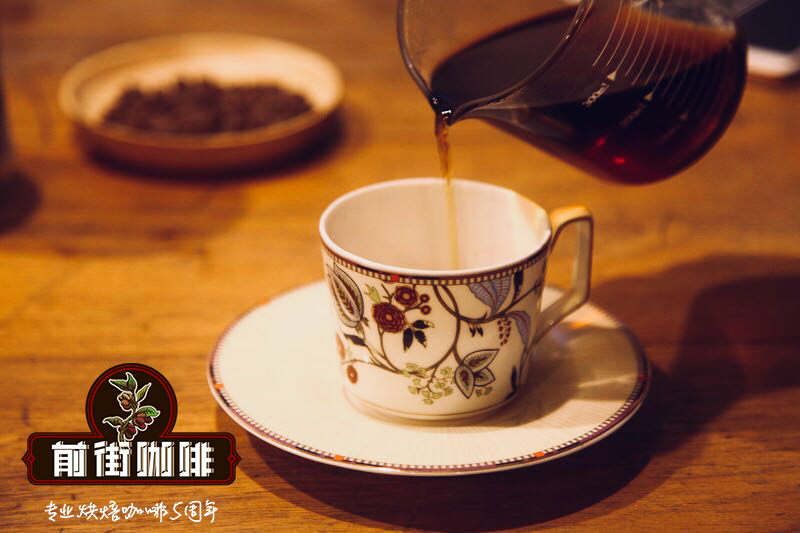
Professional coffee knowledge exchange more coffee bean information please follow the coffee workshop (Wechat official account cafe_style)
Many people have a bad experience of consuming too much caffeine, trembling hands, rapid heartbeat and anxiety, except for poor quality coffee, which is usually attributed to the effects of caffeine.
For some of the more sensitive people, a little caffeine is enough to have a negative effect. At this time, decaf coffee is a good choice for these more sensitive people, or those who deliberately abstain from caffeine.
But some people have wondered, can decaf also be a boutique grade? If you use micro-batches of selected beans to carry out the low-cause program, will it still taste good? And how to remove caffeine? There are many misconceptions about the quality and health effects of decaf. This article tells us about decaf.
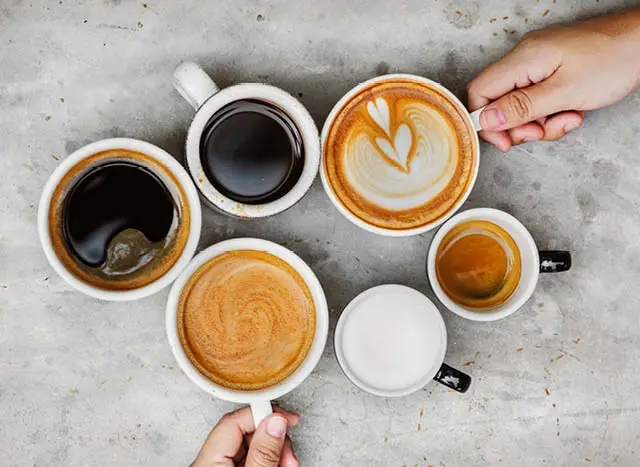
All kinds of coffee drinks
Who is decaf suitable for? Why drink it?
All coffee has caffeine in its natural state, and this chemical is seen as protecting coffee trees from pests and preventing seeds from competing for nutrients.
Caffeine has been used as a stimulant for thousands of years, but sometimes we don't want the side effect of coffee. However, in addition to this reason, there are more factors that make people choose decaf coffee rather than normal coffee, which of course includes public awareness of health problems.
2018 the American Coffee Association reported that 42 per cent of coffee drinkers chose decaf, most of whom were social youth. Some market studies have pointed out that consumers who choose decaf coffee are more willing to spend more money on coffee for the sake of quality.
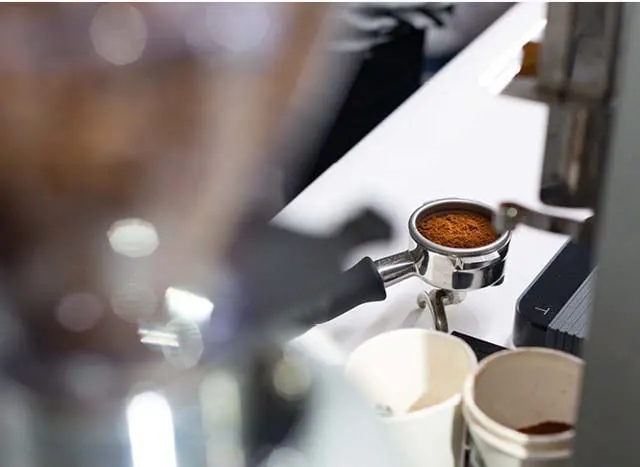
Coffee powder ready to be brewed, source: Rea Cafe
How can I get decaf?
Decaf was invented by LudwigRoselius in 1905. He used benzene to remove caffeine from raw coffee beans, and benzene, a chemical that has been shown to cause cancer, should now be on the market to remove caffeinated decaffeinated coffee.
However, all modern decaffeinated techniques are derived from the same technique. First, raw coffee beans are soaked in water to dissolve caffeine in water to achieve the effect of removing caffeine. It is mainly divided into several caffeine removal techniques:
Direct solvent method
This is the most common decaffeinated procedure, and the direct solvent method uses dichloromethane or ethyl acetate to dissolve caffeine.
Soak the coffee beans in the solvent, and the solvent is attached to the caffeine molecule, and then recover the solvent, then wash the coffee beans, wash the steam of the coffee beans, will remove the residual solvent. Dry the coffee beans, and then there is the normal baking procedure.
The United States Food and Drug Administration limits the amount of dichloromethane in decaffeinated caffeine to 10/1000000 (0.001%). Long-term exposure to dichloromethane is suspected to increase the risk of cancer, so there are some concerns about using this solvent.
Ethyl acetate usually comes from fruit or sucrose, so the direct solvent method is sometimes referred to as a natural decaffeinated procedure when used. But ethyl acetate is a highly flammable substance, so it is more dangerous. It also has a special smell, which may remain in decaf.
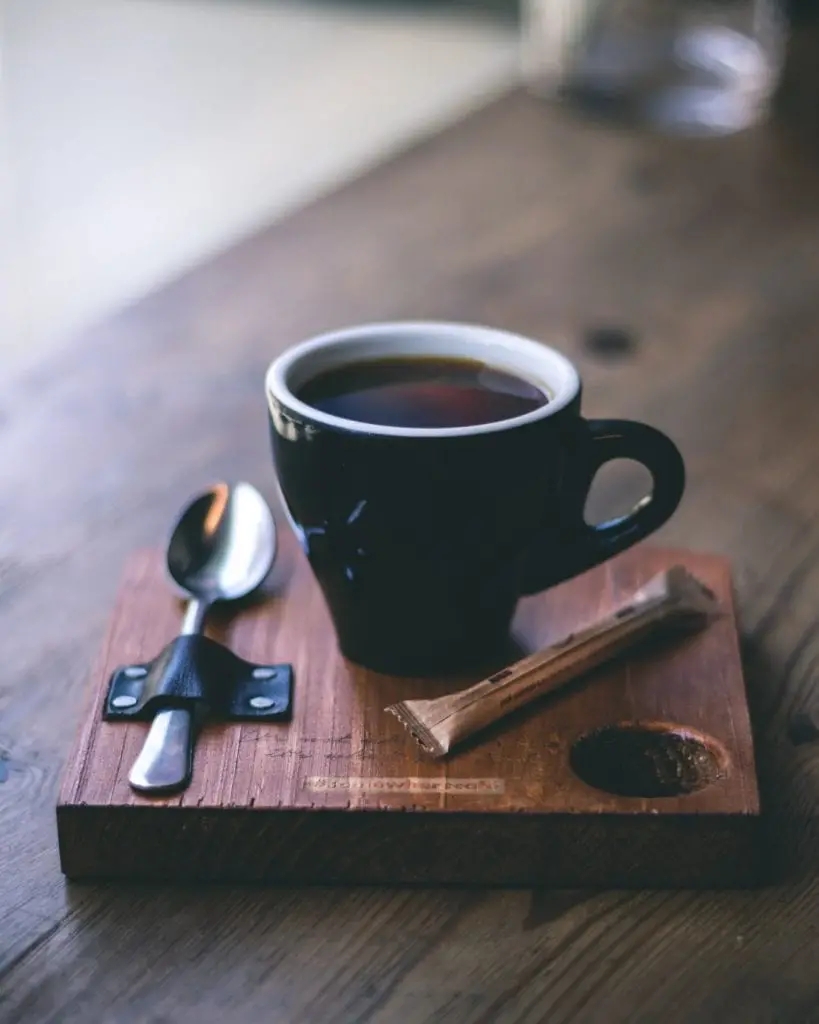
Freshly brewed coffee, source: Kinima Coffee
Carbon dioxide treatment
The carbon dioxide treatment is similar to the direct solvent method, which soaks the coffee beans in warm water, replaces the solvent with high-pressure liquefied carbon dioxide, extracts caffeine, and then returns to room temperature to become a gas.
Coffee made from decaffeinated carbon dioxide has a lower burden on the human body, and according to the study, this method extracts more caffeine than the direct solvent method, but the cost of this method is much higher than that of the direct solvent method.
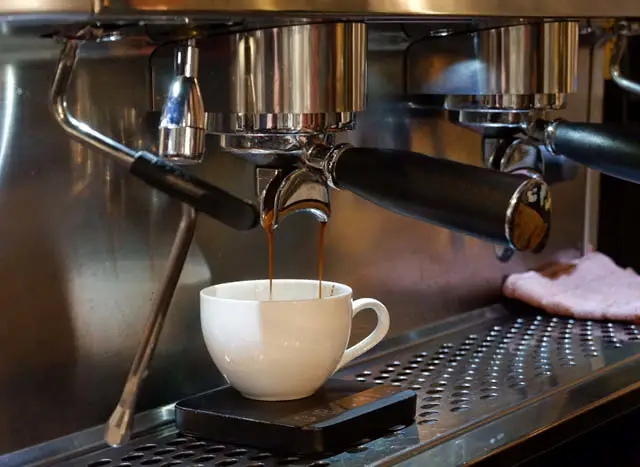
Espresso being extracted. Source: Neil Soque
Swiss water treatment method
This treatment will soak the raw coffee beans in hot water, and the soaking stage has actually partially removed caffeine. The soaked solution is then filtered with activated carbon and finally poured back into the coffee beans. This series of steps will be more effective in removing caffeine. In addition to not requiring the use of chemical solvents, the soaked solution can be reused in different batches of treatment procedures, but coffee still loses a lot of flavor in the filtration process.
The disadvantage of this method is that it is much more expensive to produce than the above two solvent methods, and the extracted caffeine is directly filtered out and cannot be used for other commercial purposes.
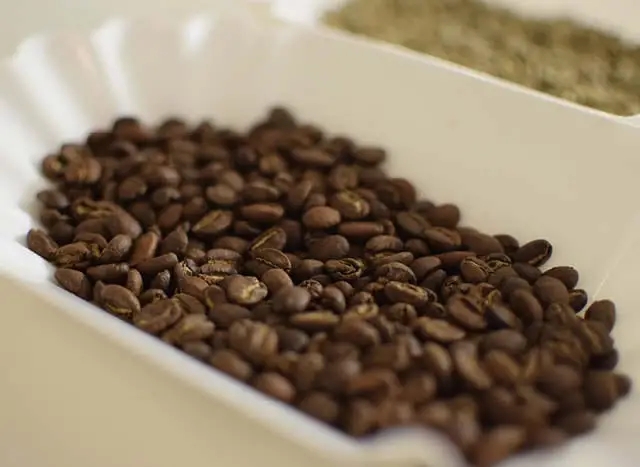
Coffee, raw beans and cooked beans. Source: Julio Guevara
Mountain spring water treatment
This is the use of another special kind of water, water from glaciers to extract caffeine. The company Descamex says it uses a special filter to remove caffeine.
After treatment, you will get a caffeine-free aqueous solution, which also dissolves the solid substance of coffee and can be reused in the decaffeinated process.
This treatment and the Swiss water treatment are both methods that do not use chemical solvents, so some consumers regard it as a safer and healthier choice.
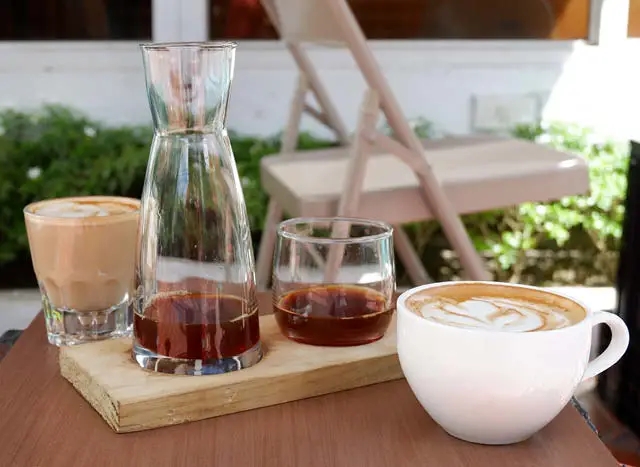
Coffee drinks. Source: Neil Soque
Can decaf also be fine coffee?
It is often recognized that decaf coffee is insipid and boring. Although caffeine itself does not have any smell, the most important flavor substance of coffee beans will be lost in the process of processing, and the loss of flavor has nothing to do with the act of removing caffeine.
The biggest challenge for decaf companies is to find a way to extract caffeine without sacrificing the flavor of the beans. This has always been a very controversial topic in the boutique coffee industry.
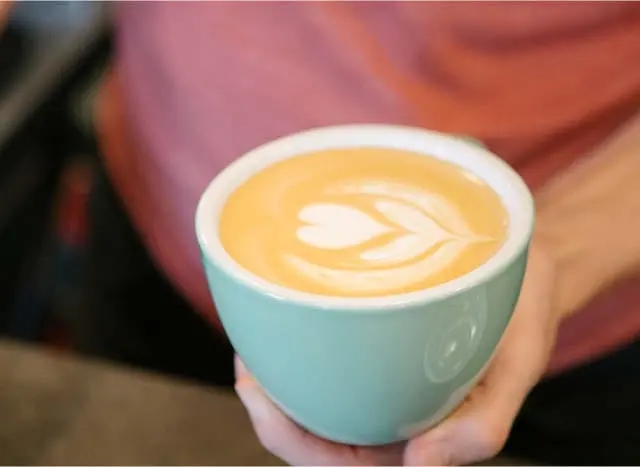
Source: Devon Barker
Matt Hassel, a raw bean buyer who specializes in quality control for the company Collaborative Coffee Source, said: "the most common treatment is to remove caffeine directly with a solvent, which directly destroys the flavor of coffee, because the removal cannot be targeted only on caffeine. These delicious substances in coffee will be consumed in large amounts in the processing process, resulting in a huge negative impact on the flavor of coffee. "
He also said that lower-quality coffee beans are often treated with solvents because the beans themselves do not taste good.
But these remarks do not mean that there is no low-caffeine boutique coffee, the use of good quality coffee beans, and the use of less flavor loss of caffeine treatment to remove caffeine, can also get good quality coffee.
"low-caffeine coffee beans obtained by Swiss water treatment are less likely to destroy their flavor, but they are more expensive to treat, so they are less used to treat decaf."
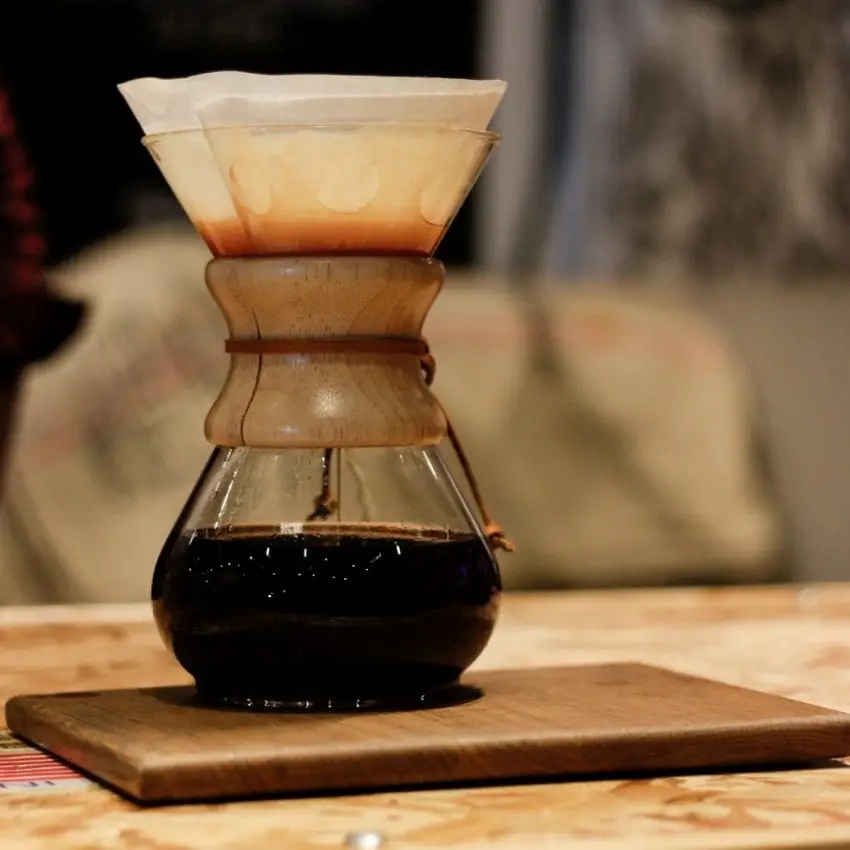
Use Chemex to make coffee. Source: Michel
Erin Reed, marketing director of Swiss Water, said: "the Swiss water treatment method preserves the solid solution of coffee beans, and this technology extracts caffeine by" filtering out caffeine's activated carbon. "
"this step retains the flavor of the coffee origin and batch processing, and in order to confirm that the flavor has been retained, we will conduct a cup test before and after the de-caine procedure. "
In fact, if readers with experimental spirit can choose coffee beans from different producing areas and different decadent treatments, and try to compare them with an open mind (or even cup test), they may find low-caffeine coffee with a better flavor than expected. After all, there is always market demand, so we can't ignore it.
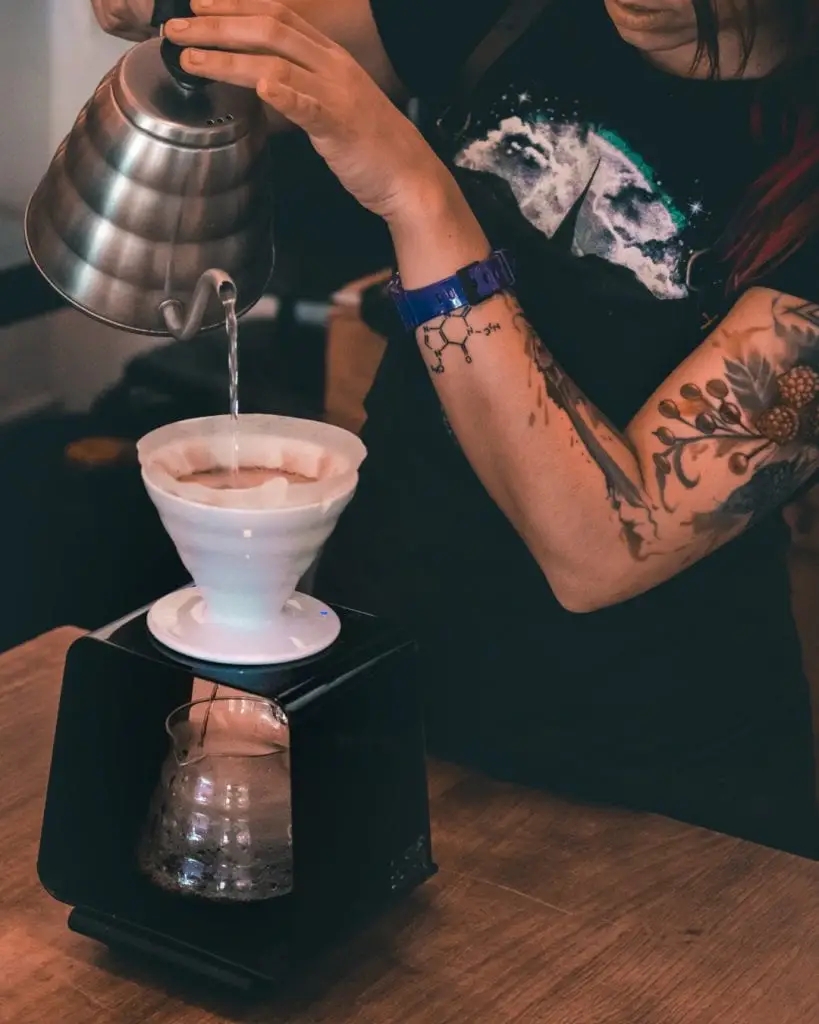
Use V60 to make coffee. Source: Kinima Coffee
Does decaf coffee have to be roasted deeply?
"Coffee beans that have gone through the process in the past have more pores and are more likely to be heated, so the baker needs to make some adjustments when roasting," Matt said. The development of coffee flavor takes longer, which means it takes longer to bake. If the low-caffeine coffee beans are roasted lightly, it will lead to the lack of flavor, dispersion of flavor, sweetness and lack of acidity. The alternative is to caramel the coffee beans through deep roasting to produce another flavor and sweetness. "
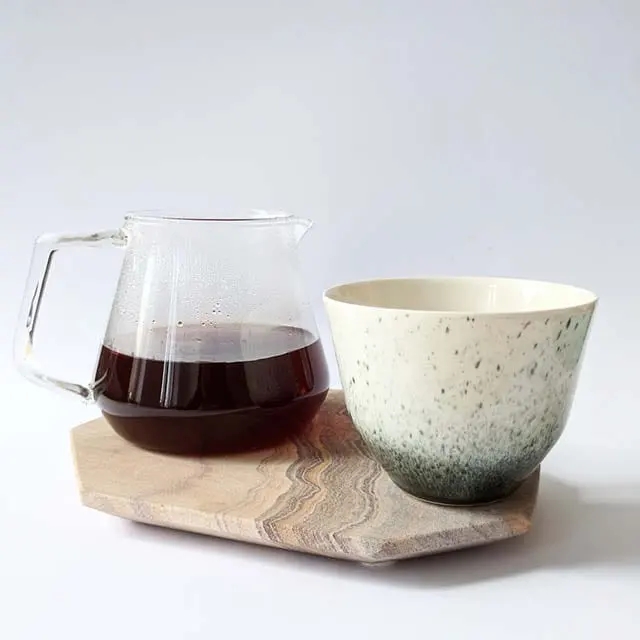
Hand coffee, source: SebastianFranz é n
If the roasting method mentioned above runs counter to your perception of boutique coffee, please don't be depressed. In fact, there are still good quality decaf to discover.
"although decaf coffee is not completely consistent with the caffeine flavor of normal coffee, there are still many decaf coffees roasted lightly, retaining the natural acidity and sweetness of coffee beans."
"decaf has been running for a long time, while the decaf produced by Swiss water treatment has a good effect, trying to retain the original flavor of the coffee. Perhaps the biggest problem now is that most businesses still use low-quality beans to make decaf coffee, and the quality of the coffee is of course not good. "
"We are negotiating with a Colombian raw bean supplier whose coffee has a cup score of more than 86 points, hoping to use their coffee to produce decaf," Matt said. "
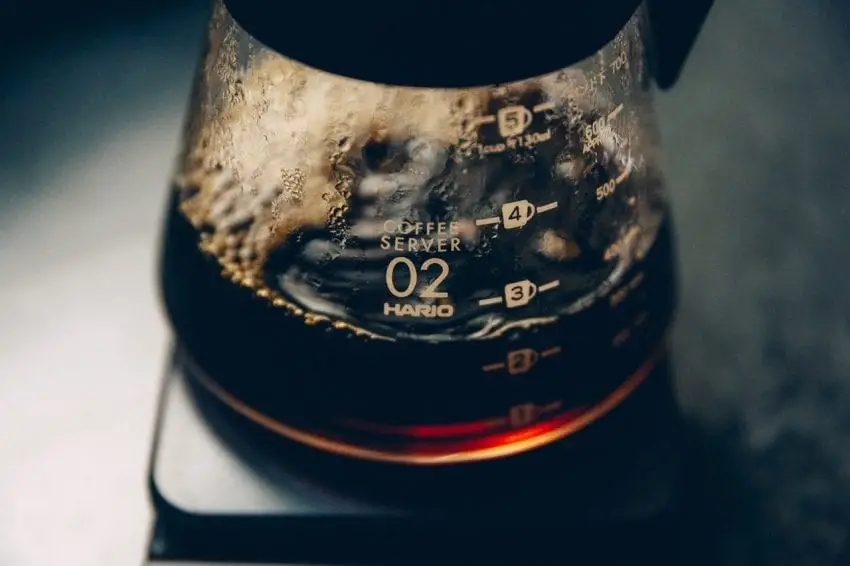
Source: Coffee and I
It may be difficult to find a boutique flavor in decaf, but there are still some options.
By understanding the processing procedures of different decaf coffee and how decaf beans are roasted, you can know how to find decaf coffee with a good flavor without stepping on thunder.
Of course, it may be expensive to buy high-quality decaf, but more and more people are willing to pay more for it, and when more people choose decaf, what they can do is to meet the needs of users.
Translated from Perfect Daily Grind.
Translated by Cheng Zhen Coffee
Important Notice :
前街咖啡 FrontStreet Coffee has moved to new addredd:
FrontStreet Coffee Address: 315,Donghua East Road,GuangZhou
Tel:020 38364473
- Prev
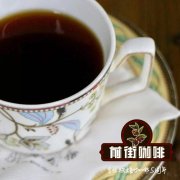
How to keep coffee beans fresh? How to distinguish the freshness of coffee beans?
One is the coffee hoarded in the closet. Can you still drink it now? Here is a list of what happens after coffee roasting, and use information to help you solve the problem. The new coffee can hold up to three weeks. The new roasted coffee will hold its best flavor up to three weeks. Once the roasting is finished, the coffee beans will take several days to drain (dioxygen).
- Next
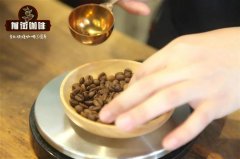
Coffee beans are also male and female?
In the plant world, some species are male and female. Some are male and female flowers, which need to be pollinated before the female flowers bear fruit and grow seeds, such as melons and fruits. Some are male and female plants, male plants will not blossom fruit, such as papaya, willow. Coffee is a plant of Rubiaceae, which can self-pollinate. The same flower has stamens and pistils, so it can pollinate itself.
Related
- Beginners will see the "Coffee pull flower" guide!
- What is the difference between ice blog purified milk and ordinary milk coffee?
- Why is the Philippines the largest producer of crops in Liberia?
- For coffee extraction, should the fine powder be retained?
- How does extracted espresso fill pressed powder? How much strength does it take to press the powder?
- How to make jasmine cold extract coffee? Is the jasmine + latte good?
- Will this little toy really make the coffee taste better? How does Lily Drip affect coffee extraction?
- Will the action of slapping the filter cup also affect coffee extraction?
- What's the difference between powder-to-water ratio and powder-to-liquid ratio?
- What is the Ethiopian local species? What does it have to do with Heirloom native species?

